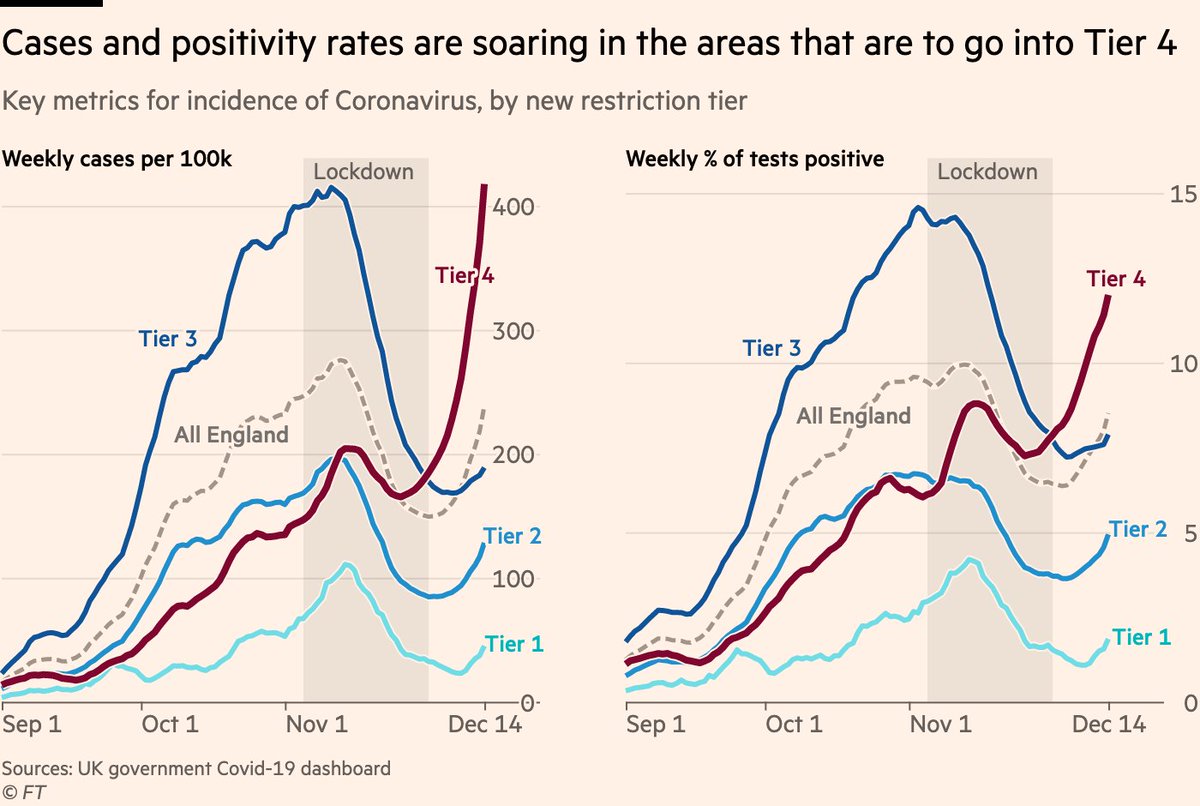
NEW: quick chart showing key context for today’s news of a Tier 4 Christmas
Cases are soaring in areas set to go into T4, with rate of increase extremely worrying. Testing has increased lately too, but even if we look at positivity, the rate of increase is very steep.
Cases are soaring in areas set to go into T4, with rate of increase extremely worrying. Testing has increased lately too, but even if we look at positivity, the rate of increase is very steep.

Story here from @PickardJE ft.com/content/3484bb…
And we’ll have more later on what we know about the new strain
And we’ll have more later on what we know about the new strain
And here’s weekly change in positivity for all English local authorities:
Increasing almost everywhere, and doubling every 10 days in almost 50 local authorities.
Increasing almost everywhere, and doubling every 10 days in almost 50 local authorities.

Finally, the most infuriating response to the latest data is "they’re just cases, nobody is actually ill. what about hospital data?"
Well, since you asked so nicely:
Hospital occupancy is rising extremely rapidly in London, SE, E & Wales, and climbing across the UK in aggregate
Well, since you asked so nicely:
Hospital occupancy is rising extremely rapidly in London, SE, E & Wales, and climbing across the UK in aggregate

Note that the colours for outbreaks that are decelerating or in remission are not applicable to a single UK region.
Hospitals are either filling with more Covid patients, or holding steady at their already high levels (and likely to rise again imminently).
Hospitals are either filling with more Covid patients, or holding steady at their already high levels (and likely to rise again imminently).
• • •
Missing some Tweet in this thread? You can try to
force a refresh















